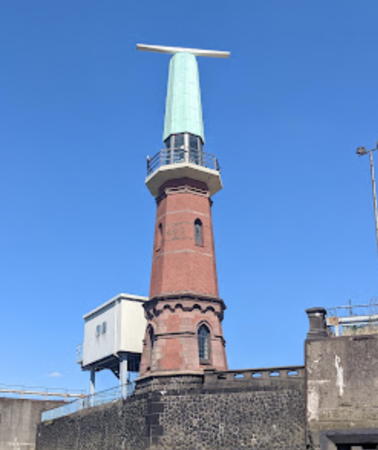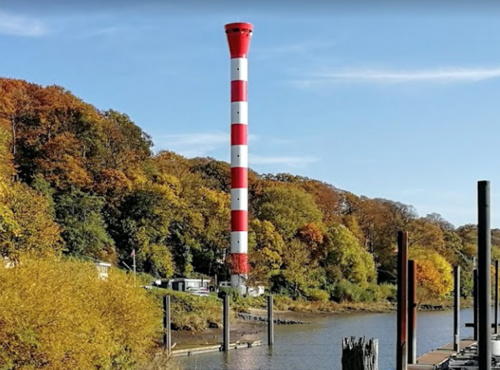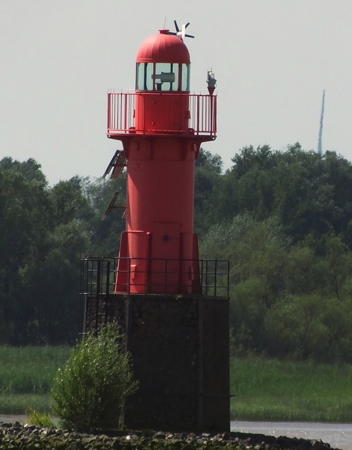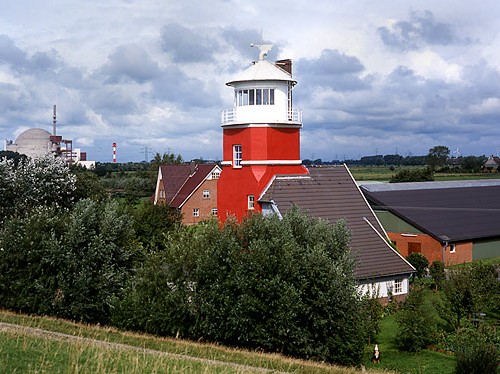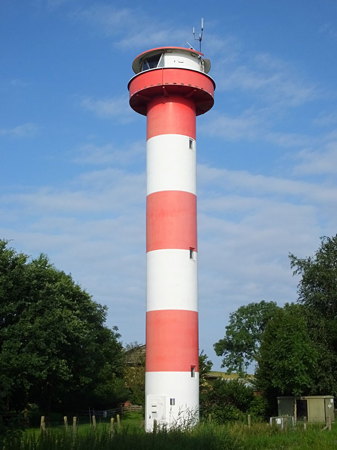The Federal Republic of Germany (Bundesrepublik Deutschland in German) occupies a central location in northern Europe with two coastlines, one facing northwest on the North Sea and the other facing northeast on the Baltic Sea. The country's history is long and complex. The large number of historically independent German regions came together in 1871 to form the German Empire. The Empire became a republic after World War I (1914-18). After World War II (1939-45) Germany was divided into two countries, the German Federal Republic in the west, usually called West Germany, and the Communist-led German Democratic Republic in the east, usually called East Germany. After the Communist government collapsed the Federal Republic reunified the nation in October 1990.
On the North Sea coast of Germany the Elbe estuary leads from the sea to the port of Hamburg. The estuary has been improved for the navigation of large vessels and it's marked by more than 70 lighthouses in all: the largest number of lighthouses on any inland waterway in the world. This page lists those lighthouses in the city of Hamburg and on the north side of the Elbe above Brunsbüttel, where the waterway narrows from the broader waters of the Elbemündung (mouth of the Elbe). For lights on the south side of the estuary see the Cuxhaven and Stade page.
The Federal Republic is a federation of sixteen states (Länder) and the states are divided into districts (Kreise). The Free and Hanseatic City of Hamburg (Freie und Hansestadt Hamburg) is one of the 16 states. Downstream lighthouses on the north bank of the Elbe are in the Pinneberg and Steinburg Districts of the state of Schleswig-Holstein.
In German a lighthouse is a Leuchtturm ("light tower"), plural Leuchttürme. The front light of a range is the Unterfeuer and the rear light is the Oberfeuer. There are many modern range lighthouses and most of these towers are crowned by a topmark: a large, distinctive structure that serves to mark the range clearly in the daytime. Some topmarks are conical, others are funnel-shaped, and some consist of one or more gallery-like rings around the tower.
In German Insel is an island, Riff is a reef, Kap is a cape, Bucht is a bay, Fluss is a river, Mündung is a river mouth or estuary, and Hafen is a harbor. The word Straße ("street") is also used for a waterway or strait.
Lighthouses in Germany are operated by the regional harbor authority, called the WSA (Wasserstraßen- und Schiffahrtsamt). All the lights on this page are in the jurisdiction of WSA Elbe-Nordsee. The WSA's are linked to and regulated by a federal agency, the Wasserstraßen- und Schifffahrtsverwaltung des Bundes (WSV).
ARLHS numbers are from the ARLHS World List of Lights. DE numbers are the German light list (Leuchtfeuerverzeichnis) numbers as noted on Erich Hartmann's website. Admiralty numbers are from volume B of the Admiralty List of Lights & Fog Signals. These lights are not included on the U.S. NGA List.
- General Sources
- Leuchttürme und Leuchtfeuer an der Nordsee
- Photos and information posted by Erich Hartmann, a contributor to the Online List of Lights.
- Online List of Lights - Germany North Sea
- Photos by various photographers posted by Alexander Trabas. Some of the Elbe photos are by Hartmann, Rainer Arndt, or Capt. Peter Mosselberger ("Capt. Peter").
- Leuchtturm-Atlas
- A large site with excellent photos and information on nearly all German lighthouses, maintained by Frank and Birgit Toussaint.
- Leuchttürme.net - Deutschland
- Outstanding photos by Malte Werning.
- Lighthouses in Germany
- Photos by various photographers available from Wikimedia.
- World of Lighthouses - Germany
- Photos by various photographers available from Lightphotos.net.
- Leuchtturmseiten von Anke und Jens - Germany - River Elbe
- This site has photos and information on many of the lights.
- Deutsche Leuchttürme/Feuerschiffe
- Photos posted by Klause Huelse. Huelse also has a large collection of historic postcard views.
- Schifffahrtszeichen
- Lighthouse information from WSA Elbe-Nordsee.
- Interessengemeinschaft Seezeichen e.V.
- Germany's national lighthouse preservation organization.
- GPSNavigationCharts
- Navigation chart information for the Elbe.
- Navionics Charts
- Navigation chart for the Elbe.
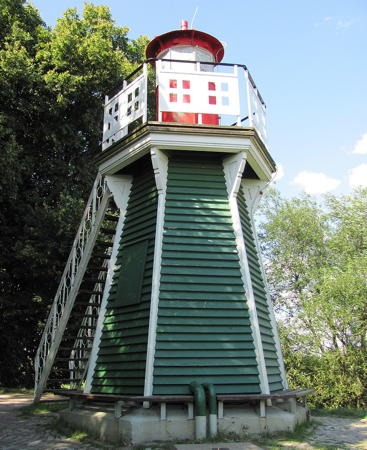
Bunthäuser Spitze Light, Hamburg, August 2012
Wikimedia Creative Commons photo
by NordNordWest
 Blankenese Unterfeuer, Hamburg, July 2021
Blankenese Unterfeuer, Hamburg, July 2021
photo copyright Manfred Schmidt; used by permission
